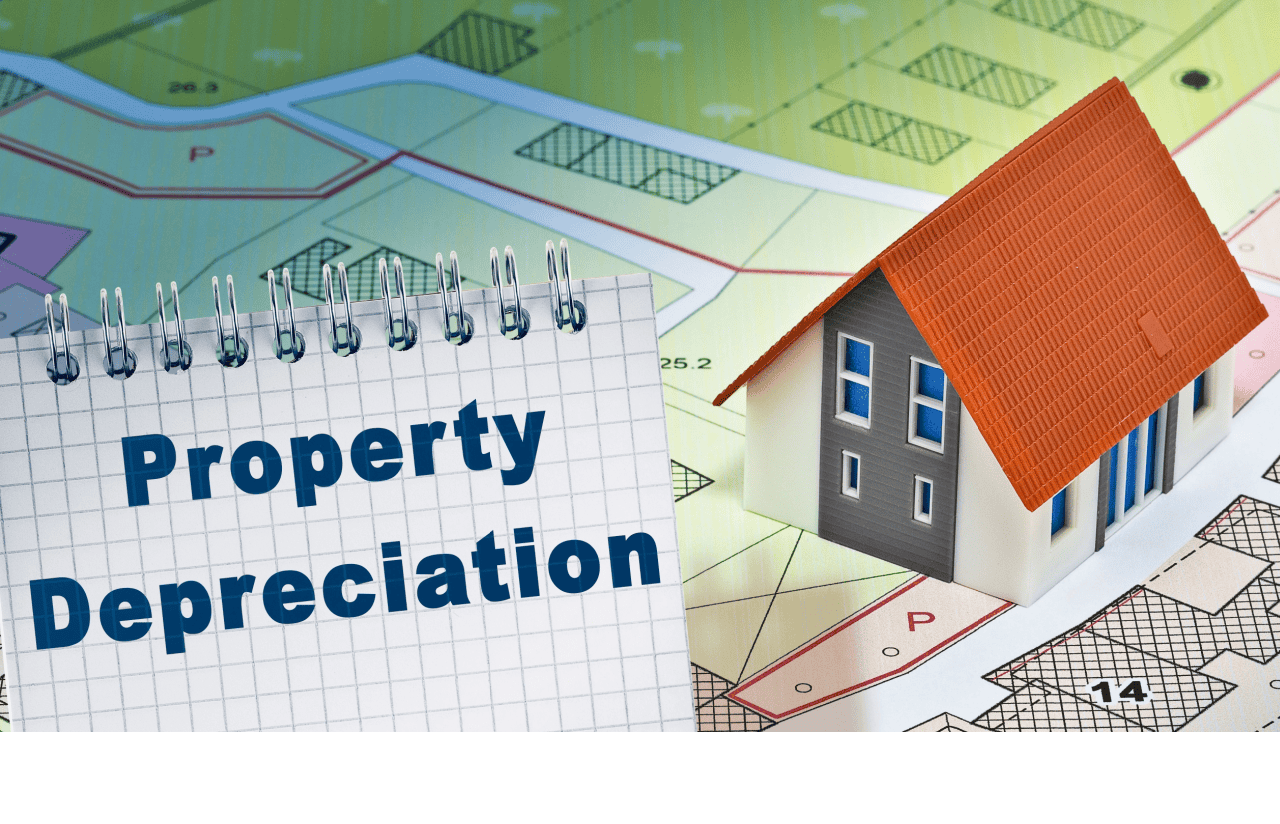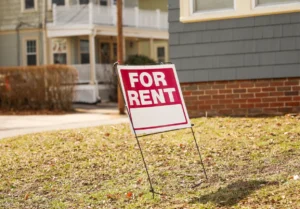Home·Property Management·Apartment Depreciation. How Does It Work?

Apartment Depreciation. How Does It Work?
Have you ever wondered how savvy real estate investors manage to save significant amounts on their taxes while growing their portfolios? The answer lies in the powerful tax-saving tool known as apartment depreciation.
In this guide, we’ll unravel the mysteries surrounding apartment depreciation, revealing how it works, how to calculate it correctly, and how to legally maximize your tax savings.
Key Takeaways
-
Residential rental properties, which include apartments, generally depreciate over a 27.5-year period, as determined by the IRS. In contrast, commercial properties depreciate over a longer period of 39 years.
-
Depreciation is a powerful tax-saving tool for property owners, as it reduces their taxable income and can generate substantial tax savings in the long run.
-
Depreciation recapture tax is a levy imposed on the recaptured amount, with a maximum rate of 25%.
What is Apartment Depreciation?
Apartment depreciation, also known as rental property depreciation, is a tax deduction that allows property owners to recover the cost of their investment over time, accounting for wear and tear. This depreciation process involves:
- Determining the cost basis and the value attributed toward the building, excluding the land value
- Determining the recovery period to recover the investment cost
In essence, rental property owners can deduct expenses associated with maintaining their property, such as insurance, taxes, and interest expenses, from their rental income.
To be eligible for rental property depreciation expense, a property must be owned by the taxpayer and used in a business or income-producing activity, have a determinable useful life, and be expected to last more than one year.
If you’re a property owner aiming to maximize tax savings and make informed decisions about your investments, you need to grasp the concept of apartment depreciation. Precise calculation of depreciation can reduce your taxable income, potentially saving you tens or hundreds of thousands or even millions of dollars annually, depending on the size of the rental property.
How do you Calculate depreciation on a Building?
Calculating depreciation involves several steps. First, you need to determine the cost basis of your rental property, which is the purchase price plus any additional expenses incurred, excluding the land value. This cost basis serves as the foundation for calculating depreciation deductions.
Next, you must identify the applicable depreciation method and recovery period for your property.
For residential rental properties, the straight-line method with a recovery period of 27.5 years is typically used, while other conventions may apply for nonresidential real property under the alternative depreciation system.
To claim depreciation on your rental property, you must:
- File IRS Form 4562
- Meet specific criteria listed in IRS Publication 527
- Depreciation deductions can begin as soon as the property is ready and available to use as a rental.
A precise calculation of depreciation is vital to optimize tax savings and adhere to IRS regulations. Miscalculations can result in missed deductions and potential tax complications; hence, maintaining extensive documentation and seeking advice from a tax professional is a must.
Do Apartments Depreciate over 27.5 Years or 39 Years?
The depreciation period for properties can vary depending on the type of property in question. Residential rental properties, which include apartments, generally depreciate over a 27.5-year period, as determined by the IRS. In contrast, commercial properties depreciate over a longer period of 39 years.
This means that residential rental properties, whether larger or smaller, can depreciate more “paper losses” annually than commercial property as the depreciation schedule is over a shorter time period. Grasping this difference in depreciation periods matters because it directly influences the annual depreciation deduction.
Why Depreciation is such a Powerful Tool
Depreciation is a powerful tax-saving tool for property owners, as it reduces their taxable income and can generate substantial tax savings in the long run.
For example, by claiming depreciation on a property, the cost of purchasing or improving the rental property can be deducted from the taxable income, thus decreasing the amount of income subject to taxation and, in turn, lowering the tax liability for the property owner.
Depending on the situation, real estate depreciation can result in hundreds of thousands or millions of dollars in tax savings per year for real estate investors.
Recapture of Apartment Depreciation
When selling a property, depreciation must be recaptured, potentially increasing capital gains taxes liability. This recapture process ensures that property owners pay taxes on the gains attributable to depreciation deductions they have taken on their property investments.
Minimizing the impact of the recapture process on your tax liability requires a clear understanding of the specific tax regulations that govern depreciation recapture and investigating strategies for deferring recapture whenever feasible. Let’s delve deeper into these aspects of depreciation recapture.
Depreciation Recapture Tax
Depreciation recapture tax is a levy imposed on the recaptured amount, with a maximum rate of 25%. This tax is triggered upon the sale of a property or asset that has been depreciated for tax purposes, and the Internal Revenue Service “recaptures” the total depreciation expense taken and taxes it at the applicable ordinary income tax rate, up to 25%.
When selling a property, it’s important to know how the depreciation recapture tax operates and the potential impact it could have on your tax liability.
By being aware of the tax implications of depreciation recapture, you can make informed decisions about your property investments and strategically plan for the potential tax consequences.
Strategies for Deferring Depreciation Recapture
One option for deferring depreciation recapture is to utilize a 1031 tax-deferred exchange to reinvest in another property. A 1031 exchange enables property owners to postpone taxes on capital gains when reinvesting the proceeds into a new investment property.
Nevertheless, correctly executing the 1031 exchange is imperative, as a faulty exchange could trigger depreciation recapture and substantial tax liability. To successfully complete a 1031 exchange, you must:
- Engage a Qualified Intermediary
- Sign exchange documents
- Identify the relinquished property within 45 days
- Identify the replacement property within 45 days
- Acquire the replacement property within 180 days.
By utilizing a 1031 exchange, you can defer depreciation recapture and continue to grow your property portfolio tax-efficiently.
Common Pitfalls and Mistakes to Avoid
Avoiding common pitfalls and mistakes that could result in inaccurate deductions and potential tax complications is critical when calculating apartment depreciation. By being aware of these pitfalls, you can ensure that you accurately calculate depreciation and maximize your tax savings.
Let’s explore some of the most common mistakes property owners make when calculating apartment depreciation and discuss how to avoid them.
Incorrect Cost Basis Calculation
Incorrect cost basis calculation can lead to inaccurate depreciation deductions and potential tax issues. To accurately calculate the cost basis for apartment depreciation, you need to determine the cost of the original investment in the property, including the purchase price and any major improvements.
The cost basis of the land and building should be calculated separately, as land is not depreciable. This information can be obtained from the property tax bill or through documentation of the purchase and improvement costs.
Guaranteeing the accuracy of your cost basis calculation will help you:
- Sidestep potential tax complications
- Enhance your depreciation deductions
- Maximize your property investments
- Fully exploit the tax-saving benefits of depreciation.
Overlooking Eligible Depreciable Assets
Overlooking eligible depreciable assets, such as appliances and improvements, can result in missed tax-saving opportunities. When calculating depreciation for your property, it is essential to account for all eligible depreciable assets to maximize your tax savings.
Maintaining meticulous records of all purchases and improvements related to your property ensures accurate accounting of all depreciable assets, allowing you to fully utilize the available depreciation deductions. This attention to detail can lead to significant tax savings and help you make the most of your property investments.
Frequently Asked Questions About Apartment Depreciation
The three methods of depreciation are straight-line, declining balance, and sum-of-the-years’ digits, with the straight-line method being the most common for rental properties. The straight-line method allocates the cost of a rental property evenly over its useful life, as determined by the IRS (27.5 years for residential rental properties).
The declining balance method calculates depreciation by allocating a greater amount in the earlier years of an asset’s useful life, while the sum-of-the-years’ digits method is a form of accelerated depreciation that assigns a greater portion of depreciation to the earlier years of an asset’s useful life, particularly when the asset is first placed in service.
The normal depreciation rate for residential rental property buildings is 3.636% per year, based on a 27.5-year recovery period.
Depreciation for Apartment Building – Conclusion
Understanding and accurately calculating apartment depreciation is crucial for property owners looking to optimize their tax savings and make informed investment decisions.
By being aware of the various methods of depreciation, the applicable recovery periods, and the potential pitfalls and mistakes to avoid, you can ensure that you are making the most of this powerful tax-saving tool.
As you continue to grow your property portfolio and navigate the complex world of real estate investing, remember that apartment depreciation is an essential aspect of your success.
Source: Willowdale Equity
Get AAOA's Newsletter
Property Management News Categories
- Affordable Housing
- Collections
- COVID-19
- Eviction
- Fair Housing
- Financing
- Going Green
- Government
- Investing
- Landlord Forms
- Landlord Quick Tips
- Latest News
- Leasing
- Legal Brief
- Legal News
- Maintenance
- Make Extra Money
- Marketing Vacant Units
- Property Management
- Real Estate Investing
- Real Estate Trends
- Remodel and Repair
- Rent Magazine
- Security Deposit Alternatives
- Social Media
- Tax Tips
- Technology
- Tenant Screening
- Uncategorized













 Accessibility
Accessibility